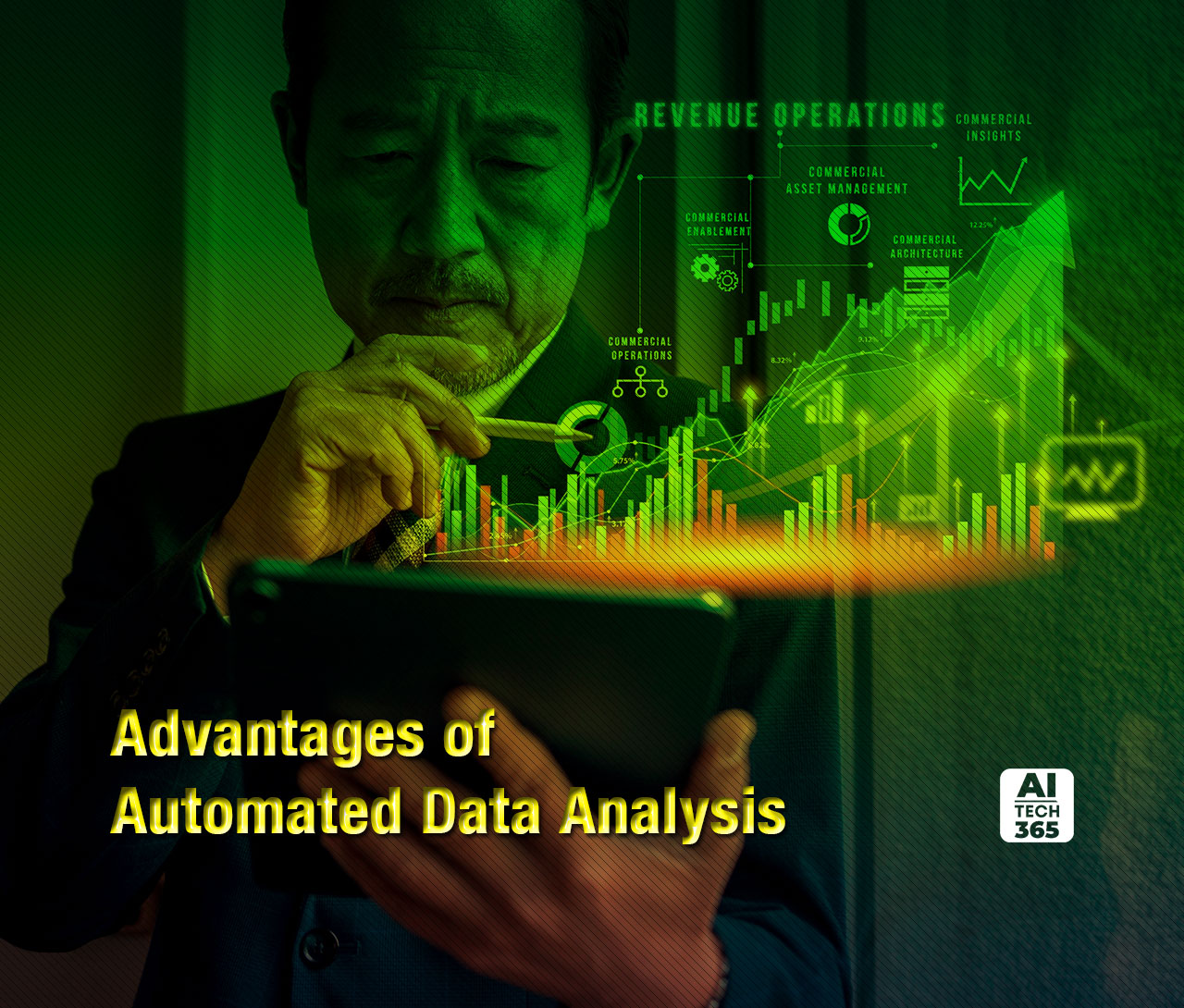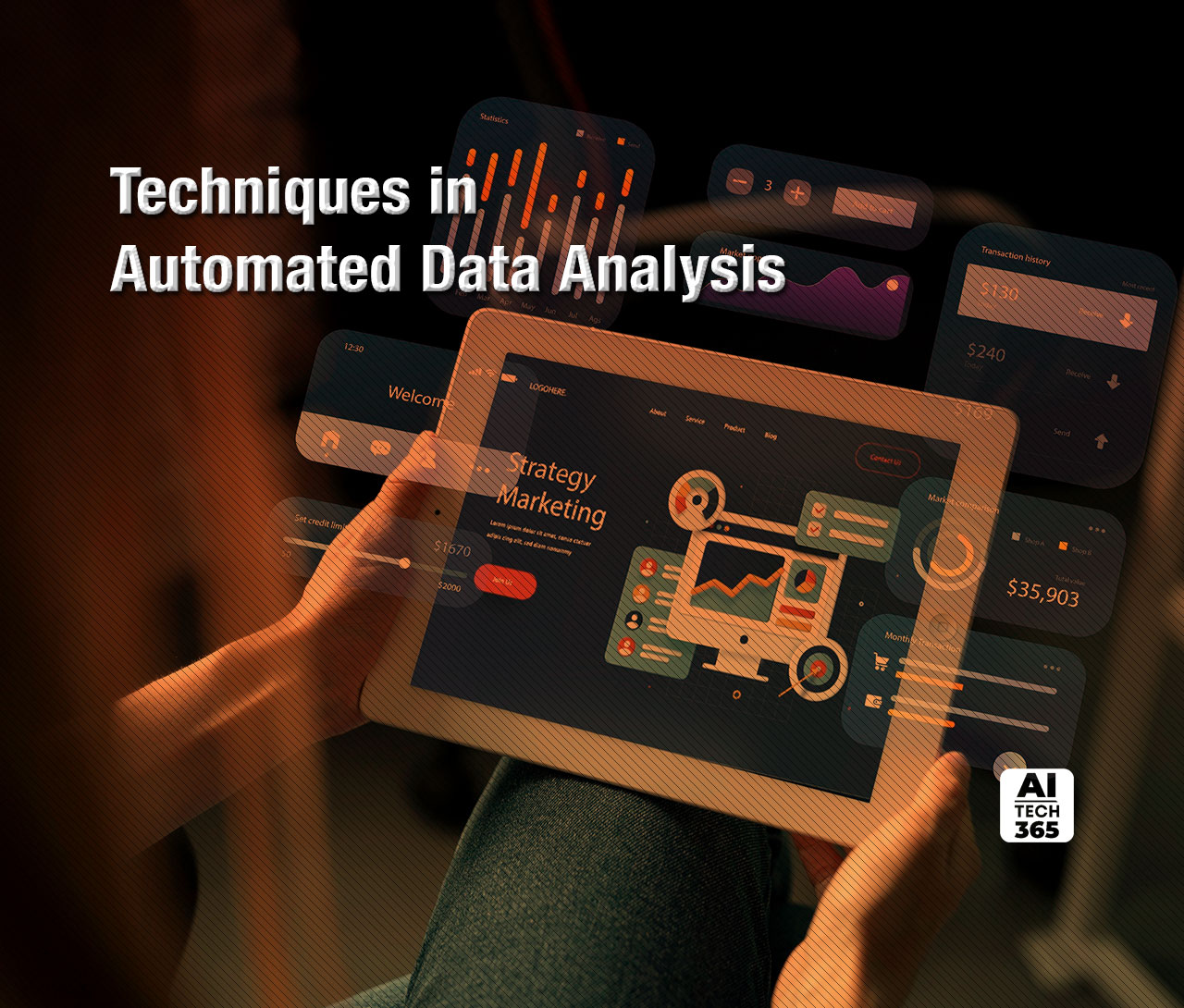In today’s data-driven world, the volume of data generated is immense and continuously expanding. Manual analysis of this vast amount of data can be time-consuming, error-prone, and inefficient. Automated data analysis is a powerful approach that utilizes computational algorithms and software to process and analyze large datasets. This article delves into its significance, highlighting its advantages, techniques, and challenges.
What is Automated Data Analysis?
Automated analytics involves leveraging computer systems to generate analytical outputs with minimal human involvement. This approach can be applied in various ways, including automating entire data processes, business intelligence dashboards, or even developing self-governing machine learning models driven by data.
Additionally, automation can target specific tasks such as
- data discovery
- preparation
- Replication
- Maintenance
- streamlining workflows and increasing efficiency across analytical endeavors
Some of the best automated data analysis tools include Jupyter Notebook, IBM Cognos, MonkeyLearn, RapidMiner, Google Data Studio, and much more.
Advantages of Automated Data Analysis
Listed below are the numerous advantages offered by automated qualitative data analysis.
Speed: Fast-track Decision-making
Automated data analysis significantly accelerates the analysis process. Unlike traditional manual methods, which require human analysts to sift through data manually, automation yields results within minutes or even seconds. Real-time analysis enables businesses to make prompt and well-informed decisions based on the most current information available.
Accuracy: Reliable Insights
Automation eliminates human errors and biases, ensuring consistent and accurate analysis. By deploying algorithms and machine learning techniques, automated data analysis uncovers patterns, correlations, and anomalies that may not be apparent to human analysts. Consequently, organizations can rely on more insightful and reliable results.
Scalability: Handling Massive Datasets
Automated data analysis effortlessly handles the enormous amounts of data that would be insurmountable for manual processing. In the case of big data, which can comprise millions or billions of records, automation becomes essential. By processing and analyzing these vast datasets, businesses can extract meaningful insights and leverage data’s full potential.
How Can Machine Learning Models And Big Data Automation Revolutionize Data Analysis?
Machine learning specialists craft statistical models capable of surpassing human performance in various tasks, such as predicting ad clicks. However, with evolving consumer preferences, static models quickly become outdated. To address this challenge, automate model construction and selection processes. By automating these tasks, different models can be built with varying parameters based on diverse data combinations. Subsequently, the model with the highest click prediction score can be automatically selected and deployed for production use.
Moreover, automation extends beyond model building. Banks and financial institutions leverage advanced anomaly detection algorithms to identify potential fraudulent transactions. When these algorithms detect suspicious signals surpassing a predefined threshold, they autonomously trigger account inspections by alerting human inspectors.
The potential for automating data analysis is vast. Now, let’s explore strategies for identifying optimal candidates for automation within your organization.
Techniques in Automated Data Analysis
- Machine Learning: These algorithms learn from historical data, making predictions and identifying patterns without explicit programming. By training them on extensive datasets, businesses can automate the analysis process and derive valuable insights. For instance, machine learning can predict disease outcomes, identify drug interactions, or personalize treatment plans in the healthcare sector.
- Financial Analysis: This analysis proves indispensable in the financial sector, where real-time analysis of market data is crucial for making informed investment decisions. Leveraging automated algorithms and data feeds, financial institutions can analyze market trends, predict stock prices, and identify potential risks or opportunities. This enables them to respond rapidly to market changes, optimizing their investment strategies.
- Cybersecurity: This analysis plays a critical role in cybersecurity as organizations grapple with increasingly sophisticated cyber threats. Analyzing large volumes of data aids in rapidly detecting and responding to potential threats. Automated tools identify patterns and anomalies in network traffic, log files, or user behavior, enabling security analysts to quickly identify and mitigate potential security breaches.
What are the Challenges in Automated Data Analysis?
In today’s data-driven landscape, organizations must prioritize both data privacy and security to protect sensitive information amidst increasing collection and analysis. This entails implementing measures like data anonymization and encryption while ensuring compliance with relevant regulations. Additionally, while automation expedites analysis, human intervention remains crucial for interpreting and acting on results. Data analysts and decision-makers play a vital role in comprehending findings and translating them into actionable strategies. Effective communication of insights across the organization is also essential to facilitate informed decision-making based on the analysis conducted.
How Can You Automate Data Analytics Effectively?
To initiate the automation of your analytics processes, it’s essential to follow a structured approach to ensure smooth implementation and minimal disruption. Firstly, delineate your objectives by involving cross-functional teams such as marketing, operations, and human resources. Setting clear goals and expectations upfront fosters collaboration and understanding among teams throughout the automation process.
Next, establish metrics for measuring the performance and effectiveness of the automated processes. These metrics serve as benchmarks to ensure that the chosen objectives are met and provide a reference point for future projects or expansions of the automated system.
Selecting reliable and well-supported automation tools is crucial. Tools like R or Python’s NumPy, Pandas, and SciPy packages are highly recommended for their robustness and extensive support within the analytics community. Their focus on shareability and collaboration simplifies the process of sharing code and processes among team members, enhancing collaboration and efficiency. Additionally, leveraging cloud platforms that host data warehouses may offer built-in tools for automated analytics, such as Google Analytics’ Analytics Intelligence tool, which utilizes machine learning to identify anomalies in time series data effortlessly.
In a Nutshell
Leveraging automated data analysis tools and techniques, businesses can extract valuable insights and gain a competitive edge in today’s data-driven world. Nevertheless, challenges such as data privacy, interpretation of results, and effective communication need to be addressed to fully harness the potential of data analysis.


